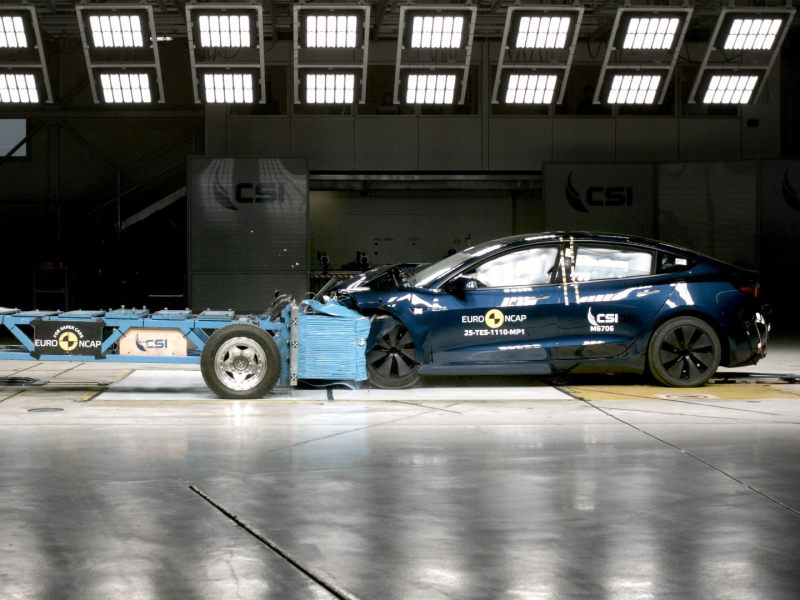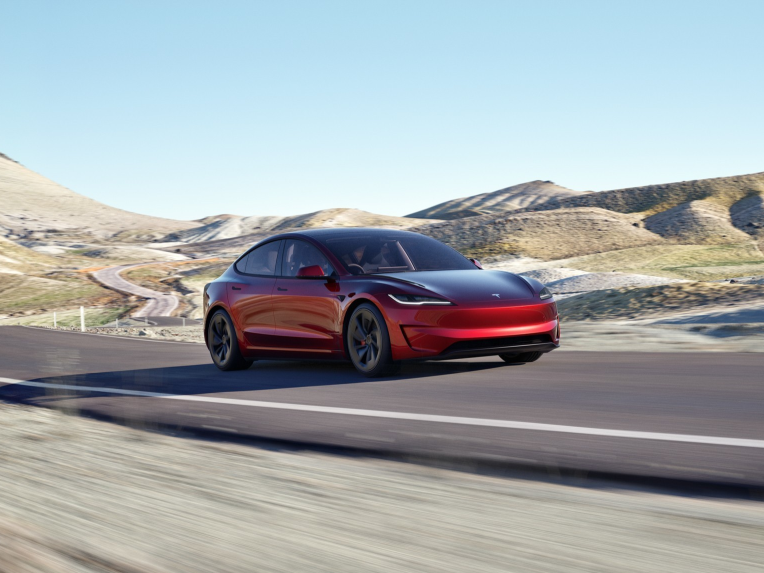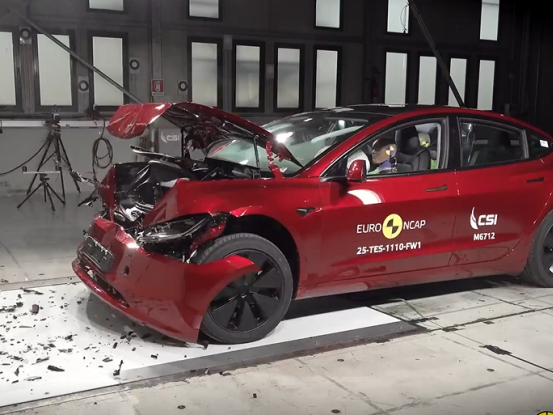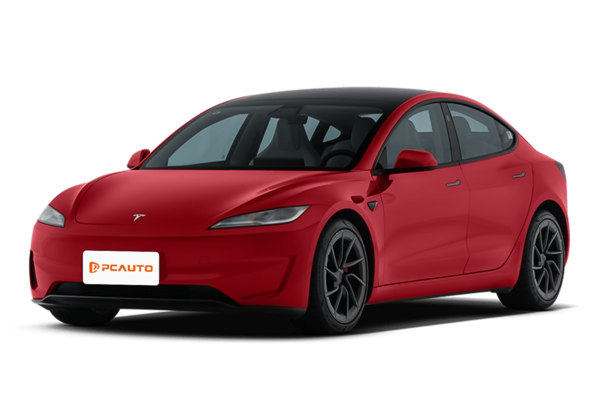Q
how long to fully charge tesla model 3
The charging time for the Tesla Model 3 depends on the charging equipment used and battery capacity. With Malaysia's common household power supply (single-phase 220V, 16A) and the standard Mobile Connector that comes with the car, you'll get roughly 15 kilometers of range per hour. A full charge from empty would take around 24 to 30 hours that way. Step up to a three-phase industrial socket (380V, 32A) or a wall-mounted charger like Tesla's Wall Connector, though, and the speed jumps to about 50 kilometers per hour—knocking full charge time down to just 6 to 8 hours. For road trips, Tesla's Supercharger V3 is the way to go; it can take you from 10% to 80% battery in around 30 minutes, perfect for a quick energy top-up when you're on the move.
Malaysia's hot climate is worth keeping in mind—avoiding fast charging during the hottest parts of the day can help preserve your battery's long-term health. That said, Tesla's battery management system does automatically adjust charging power to keep things safe. For daily commutes, charging at home overnight is the most cost-effective option, while Superchargers are best saved for emergencies or longer journeys. The good news is Tesla's charging network has pretty solid coverage in major Malaysian cities, and you can always check charger locations and availability in real-time using your car's navigation system.
Special Disclaimer: This content is published by users and does not represent the views or position of PCauto.
Related Q&A
Q
How big is the 2024 Tesla Model 3?
The 2024 Tesla Model 3 measures 4,720 mm in length, 1,848 mm in width, and 1,442 mm in height, with a wheelbase of 2,875 mm. While slightly tweaked from the previous generation, it retains its compact electric sedan DNA—perfect for city driving and tight parking.
Thanks to its EV platform, the rear legroom is surprisingly generous, and with a 425-liter trunk plus a front frunk, practicality is solid. For its class, the Model 3 sits in the upper mid-size range—roomy enough for daily use without feeling bulky.
A standout feature? The low-mounted battery pack lowers the center of gravity, boosting handling stability. And with a drag coefficient of just 0.23, efficiency gets a nice bump.
Oh, and if you’re into EVs, don’t sleep on the charging perks—Tesla’s Supercharger network is vast and fast, making road trips a non-issue.
Q
What is the new Model 3 for 2024?
The 2024 Tesla Model 3, as a mid-cycle refresh, brings key upgrades to its exterior, interior, and features.
Up front, it sports a cleaner design with sharper headlights and removed fog light trim. The rear gets sleeker new taillights for a more flowing silhouette. Inside, the changes are more noticeable: wood trim is swapped for fabric accents, ambient lighting now wraps around the cabin, and the dashboard is simplified. Tesla also ditched the traditional stalks—turn signals and wiper controls are now handled by steering wheel buttons, while gear selection is done via screen swipes or top-mounted buttons, giving it a more futuristic vibe.
Tech-wise, the audio system gets an upgrade, seats now come with ventilation, and rear passengers get an 8-inch touchscreen for climate and media controls. The base RWD model sees its battery capacity jump from 60kWh to 66kWh, adding roughly 50km of range, while the Performance version gets a slight power bump. The retuned suspension improves ride comfort, and the upgraded HW4.0 hardware boosts camera resolution for better detection.
As a benchmark in the EV space, the refreshed Model 3 doubles down on tech and practicality, making it a solid pick for buyers. That said, the lack of physical controls might take some getting used to—best to test-drive it first before deciding.
Q
How much does it cost to buy a 2024 Tesla Model 3?
The 2024 Tesla Model 3 starts at around RM 175,000, but the final price depends on your chosen configuration and add-ons. Opt for the Long Range or Performance version, and you’re looking at a higher tag.
As Tesla’s entry-level model, it packs cutting-edge EV tech, including 500+ km of range on a single charge and standard Autopilot for both daily commutes and road trips. Just keep in mind extra costs like insurance, registration, and potential home charger installation.
Tesla’s Supercharger network is expanding locally, with solid coverage in major cities, making charging hassle-free. Maintenance costs? Typically lower than gas cars—no oil changes, fewer moving parts—so long-term savings add up.
If you’re after more thrills, the Performance variant hits 0-100 km/h in roughly 3 seconds. Plus, government EV tax perks help soften the upfront cost.
Q
How reliable is the 2024 Model 3?
The 2024 Model 3 delivers solid reliability, thanks to Tesla’s continuous software updates and hardware refinements. Key areas like the battery management system and Autopilot have seen multiple optimizations, leading to a noticeable drop in failure rates.
This model features a stiffer body structure and an improved suspension setup, offering a smoother ride. Upgraded interior materials also help reduce cabin rattles—a common gripe with earlier builds.
EV maintenance costs remain low (no oil changes, etc.), though it’s wise to periodically check battery health and charging components for long-term performance. For shoppers eyeing EVs, charging infrastructure and home charging options matter—thankfully, public chargers are expanding fast, making daily use more convenient.
If you frequently road-trip, planning charging stops ahead helps. While the range easily handles daily drives, a little route prep goes a long way in maximizing the experience.
Q
What is the battery range of the Tesla Model 3 2025?
The battery range of Tesla Model 3 2025 is expected to be optimized based on existing models, and specific data needs to be released officially. However, referring to the EPA range of the 2024 rear wheel drive version, which is about 438 kilometers, and the high-performance version, which is about 513 kilometers, the 2025 model may further improve, especially in terms of battery technology or energy efficiency management. For electric vehicles, the range is greatly affected by driving habits, road conditions, and climate. Air conditioning may slightly reduce the range in hot weather, but the battery thermal management system can usually maintain stable performance. In terms of charging, Model 3 supports super fast charging, which can replenish about 250 kilometers of range in about 15 minutes, while home charging stations require 6-8 hours to fully charge. Daily commuting or long-distance travel are practical enough, it is recommended to follow Tesla's official website or local showroom for the latest information.
Q
Is the 2024 Model 3 worth the price?
The 2024 Model 3 strikes an impressive balance between price and performance. Its upgraded range, more refined interior, and enhanced autonomous driving features genuinely boost its competitiveness—especially for tech-savvy, eco-conscious buyers.
Tesla optimized the battery efficiency this time around, making it suitable for both daily commutes and longer trips, while the handling stays true to the brand’s signature responsiveness. If your budget allows and you’re open to EVs, this one’s worth considering—though a test drive is wise to see if it matches your driving style.
That said, local charging access matters. While public chargers are becoming more common, home installation costs should factor into your budget. Alternatives in this price range exist, so cross-shop specs and service policies (like warranty coverage or charging network support) to make a well-rounded decision.
Q
How many miles does a 2024 Tesla Model 3 get?
The 2024 Tesla Model 3 offers varying range figures depending on configuration. The rear-wheel-drive (RWD) version delivers an EPA-estimated 272 miles (approx. 438 km), while the all-wheel-drive Long Range model pushes that to around 341 miles (roughly 549 km). Real-world range may vary slightly based on driving style, road conditions, and climate.
As a pure EV, the Model 3 achieves this efficiency thanks to its advanced battery management system and lightweight design. It also supports fast charging—at a Tesla Supercharger, you can add up to 200 km of range in about 15 minutes. Whether for daily commutes or longer trips, that’s more than enough for most drivers, especially with charging infrastructure becoming more widespread.
If you need to maximize range, tweaking your driving mode or using the car’s built-in energy optimization features can help squeeze out even more miles.
Q
Is the 2024 Model 3 reliable?
The 2024 Model 3 delivers solid reliability, with Tesla refining its performance through ongoing software updates and hardware tweaks. Notably, the battery management system and Autopilot stability have seen improvements, resulting in fewer reported issues from owners.
Staying true to Tesla's tech-forward approach, this model packs a more efficient motor and upgraded suspension for a smoother ride. Cabin materials and noise insulation got attention too, making it equally suited for daily commutes and road trips.
Just remember: EV reliability isn't just about the car itself. Charging infrastructure and maintenance habits matter. Stick to scheduled battery checkups and use Tesla's service network. If you're shopping for an EV, compare real-world range and charging speeds with rivals, and scout your local charging options—it'll save headaches later.
Q
How fast is the 2024 Tesla Model 3?
The 2024 Tesla Model 3 delivers impressive performance across its lineup. The high-performance variant rockets from 0-100 km/h in just 3.1 seconds with a top speed of 261 km/h, while the standard range model achieves the same sprint in 5.8 seconds and tops out at 225 km/h - more than enough for daily commutes and occasional spirited driving.
What really sets the Model 3 apart is its instant throttle response, thanks to the electric motor's immediate torque delivery. This gives it a noticeable edge over traditional gas-powered cars off the line.
Beyond pure acceleration, the Model 3 packs advanced driver-assist tech and solid range figures. The performance model can cover over 500 km on a charge, with the standard version hitting around 400 km. Hook it up to a Supercharger, and you'll get to 80% in roughly 30 minutes.
For tech-savvy buyers looking to go green without compromising on performance, the Model 3 makes a compelling case. It's quick, cost-effective to run, and requires minimal maintenance - a complete package in the EV space.
Q
How many Tesla Model 3 have been sold in 2024?
As of Q2 2024, the Tesla Model 3 continues to show strong sales performance globally. However, since Tesla doesn’t break down sales figures by specific models for individual countries or regions, exact local sales numbers aren’t available. That said, given industry trends and the growing EV market, the Model 3—one of Tesla’s most popular vehicles—is expected to maintain high sales volumes in 2024.
With its impressive range, advanced Autopilot tech, and relatively accessible pricing, the Model 3 remains a top choice for many EV buyers. The rapid rise in EV adoption and expanding charging infrastructure have made more people open to going electric. The Model 3’s success has also pushed rival brands to accelerate competing models, giving shoppers even more options.
If you’re curious about EV performance or charging, it’s worth checking local charging station availability and government incentives—both can play a big role in your buying decision.
Popular Cars
Model Year
Car Compare
Car Photo
Latest Q&A
Q
Why is gasoline a fuel?
Gasoline can serve as a fuel because it possesses core properties suitable for providing power and the ability to convert energy. It is a hydrocarbon mixture obtained through fractional distillation and cracking of petroleum, mainly containing C5-C12 aliphatic hydrocarbons, naphthenes, and a small amount of aromatic hydrocarbons. It is characterized by volatility and flammability, with low viscosity facilitating smooth flow in injection systems, and rapid evaporation enabling quick formation of a uniform combustible mixture with air. Gasoline stores chemical energy; when ignited by a spark plug in the engine combustion chamber, it burns rapidly to release a large amount of thermal energy, which pushes the piston to move and converts into mechanical energy, providing power for vehicles such as cars and motorcycles. In addition, the anti-knock property of gasoline (measured by octane number) can adapt to engines with different compression ratios, ensuring stable operation and performance; it has a high energy density, storing more energy per unit volume, good combustion efficiency, and high availability of gas stations for convenient use. Therefore, it has become the main fuel for spark-ignition internal combustion engines and is widely used in transportation and related fields.
Q
What are 1st, 2nd, and 3rd family gases?
The first, second, and third family cars are vehicle categories classified based on the stages of family car-purchasing needs. The first family car is an entry-level economical model, such as the Perodua Axia and Proton Saga, priced at approximately 30,000 to 50,000 Malaysian ringgit. It emphasizes fuel efficiency and practicality, making it suitable for young families purchasing a car for the first time. The second family car falls into the mid-range category, offering more space and enhanced features, such as the Proton Persona and Toyota Vios, priced between 60,000 and 100,000 Malaysian ringgit, catering to the comfort requirements of growing families. The third family car is a premium model or an MPV/SUV, such as the Proton Exora and Honda CR-V, priced above 100,000 Malaysian ringgit. It boasts spacious interiors and upscale configurations, ideal for larger families or long-distance travel. Malaysian consumers typically prioritize fuel efficiency, maintenance costs, and space when selecting a vehicle. Families at different life stages adjust their car choices accordingly. For instance, small families may begin with the first category, upgrade to the second after having children, and larger families often opt for the third category.
Q
What are the four types of natural gas?
Natural gas can be classified into four main types based on its source: gas field gas (pure natural gas), associated petroleum gas, condensate field gas, and coalbed methane. Gas field gas is directly extracted from gas wells, typically containing over 90% methane with minimal impurities. Associated petroleum gas is a byproduct of oil extraction, containing not only methane but also significant amounts of other hydrocarbons such as ethane and propane. Condensate field gas yields light hydrocarbon fractions during extraction, characterized by a high methane content and small quantities of heavier hydrocarbons like pentane. Coalbed methane is extracted from underground coal seams, primarily consisting of methane and nitrogen, and must have a methane content exceeding 40% to be utilized as fuel. Due to compositional differences, these natural gas types vary in calorific value and applications. The first three are commonly used for urban gas supply, whereas coalbed methane requires purification before effective utilization. As a clean and efficient energy source, the development and utilization of these diverse natural gas types play a crucial role in optimizing energy structure.
Q
What are the three types of fuel gas?
Common fuel gases are mainly divided into three types: natural gas, liquefied petroleum gas (LPG), and manufactured gas. Natural gas is a flammable gas existing in nature, with methane as its main component. It is colorless and odorless, leaves no residue after combustion, and has high thermal efficiency, making it a clean energy source. Liquefied petroleum gas is a by-product of the petroleum refining process, whose main components include propane and butane. It is a gas at room temperature but can be converted into liquid through pressurization and cooling, facilitating storage and transportation. Manufactured gas is generated through thermochemical reactions of fossil fuels such as coal or petroleum under specific conditions, with main components including hydrogen, carbon monoxide, and methane. It has low production costs but produces certain pollution after combustion, so ventilation should be ensured during use. These three fuel gases have different application scenarios in the energy supply field, and their calorific values and usage characteristics also vary. For example, the calorific value of natural gas is approximately 33,000-36,000 kcal per cubic meter, that of LPG is about 90,000 kcal per kilogram, and that of manufactured gas is roughly 3,500-4,200 kcal per cubic meter. The different calorific values make them suitable for different energy demand scenarios such as households and industries.
Q
Is unleaded petrol a gas?
Unleaded gasoline is not a gas but a liquid fuel. It refers to gasoline with a lead content of less than 0.013 grams per liter and without the addition of tetraethyl lead as an anti-knock additive during the refining process. Its octane rating is typically 95, slightly lower than the 97 of leaded gasoline. The use of unleaded gasoline can effectively reduce emissions of harmful substances such as hydrocarbons, carbon monoxide, and nitrogen oxides in vehicle exhaust, thereby lowering pollution risks including smog, toxic gases, and acid rain. However, it should be noted that while unleaded gasoline contains no artificially added lead, it still retains trace amounts of lead from crude oil. Additionally, its combustion releases gases, particulate matter, and condensates, with particles smaller than 2 microns in diameter being particularly prone to prolonged suspension in the air and subsequent human inhalation. Thus, potential health impacts remain a concern. Currently, most vehicles can use unleaded gasoline directly, though certain models require selecting the appropriate octane grade as recommended by the manufacturer to ensure optimal engine performance and longevity.
View MoreRelated News

Geely EX2, Model 3/Y become the three best-selling electric vehicles in the third quarter of 2025
MichaelDec 11, 2025

Tesla launches Model Y Standard in the US, removes glass roof
MichaelOct 9, 2025

Tesla Model 3 scored the highest in 2025 Euro NCAP, becoming the safest new car in Europe
AshleyJul 8, 2025

Tesla improves the range and performance of Model 3/Y without changing the battery capacity
Kevin WongJul 3, 2025

2025 Tesla Model 3: Euro NCAP 5-Star Safety Champion
LienMay 23, 2025
View More


















Pros
Cons